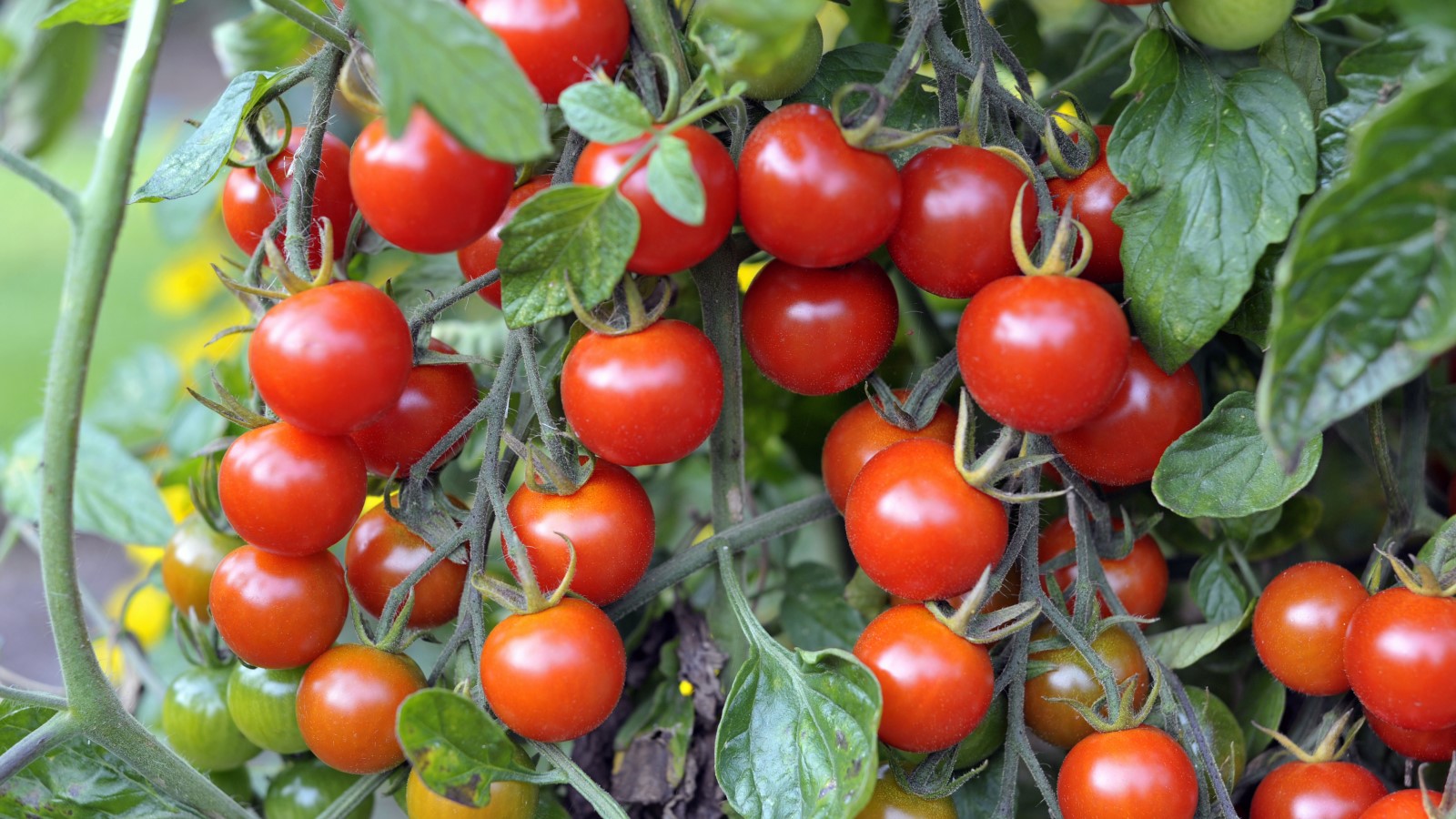
Tomatoes come in many different varieties and the main types you see described are indeterminate and determinate. They are also commonly referred to as cordon and bush tomatoes.
Knowing the difference between these two types when looking at growing tomatoes is important. Understanding the traits of indeterminate vs determinate tomatoes will help you understand what you want from your plants and which types will work better for you.
The choice between the types will dictate the timing of the crop you get, the amount of support the plant needs, and how much pruning you will need to do throughout the growing season. Treating the wrong type in the wrong way will massively affect any crop you may get – so it pays to get it right.
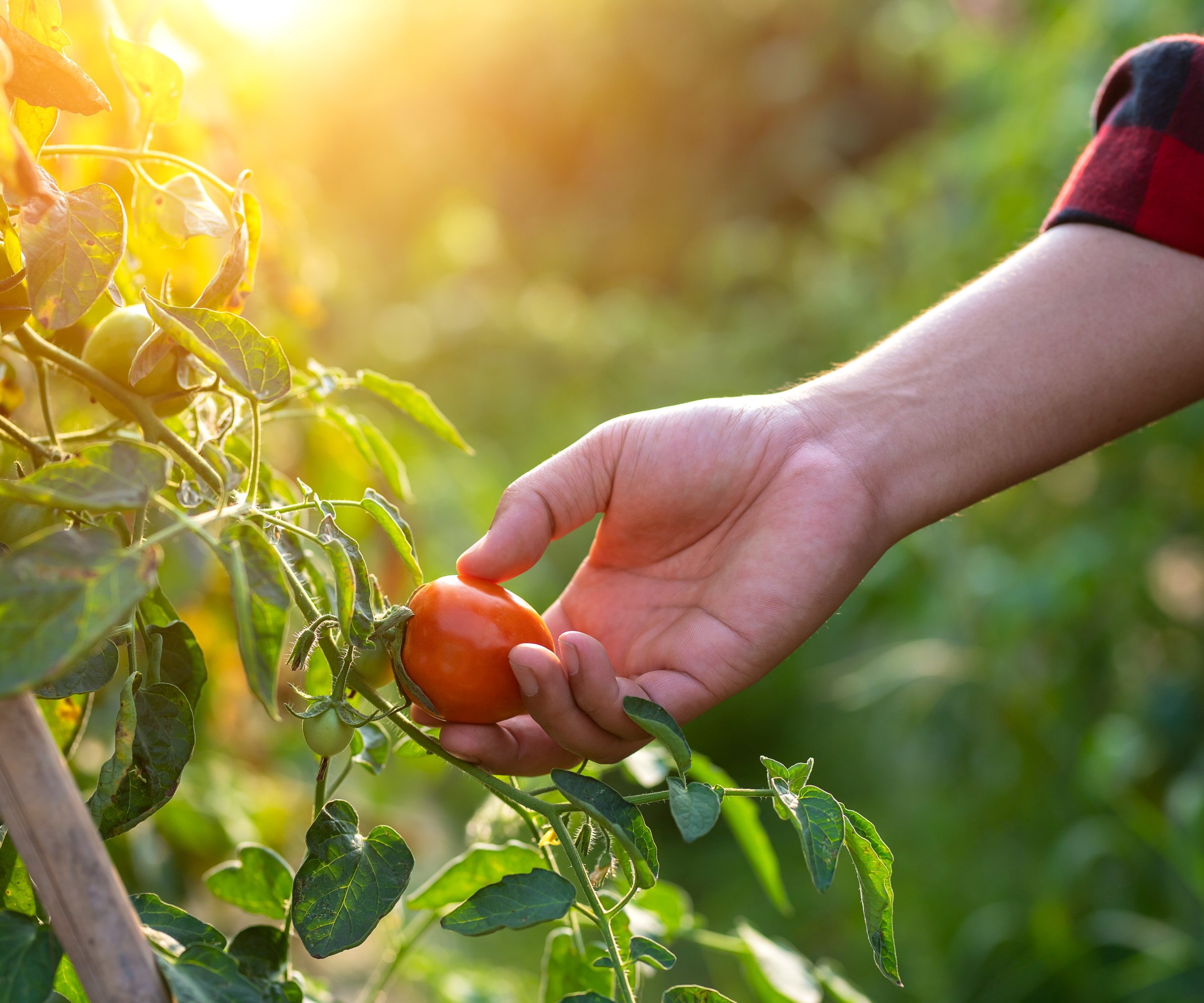
The main types of tomatoes
When you browse seed catalogs or look online you will see various descriptive terms for tomatoes and it can be confusing to differentiate between them all. What does not help further is there are different terms for the same thing. For example, as mentioned, indeterminate tomatoes will also be referred to as cordons or vine tomatoes and determinate tomatoes will be called bush varieties in many places.
As well as indeterminate and determinate types, there are even semi-determinate varieties that are a mix between the two. You will also see tomato varieties that are described as tumbling, with these more suitable for growing in hanging baskets or cascading over the edges of window boxes or containers. Finally, there are compact patio types that grow smaller and more upright, making them ideal if you want to plant tomatoes in small containers on a deck or patio.
It is important to select tomato cultivars for their growing habit as well as the other all-important factors of color, size, and flavor. Growing the wrong type is a common tomato growing mistake to avoid and it can mean scant reward and little harvest for all your time and effort growing tomato seedlings.
Whether they are indeterminate or determinate, their growth will potentially dictate why and where you grow them and definitely have an impact on how you grow and maintain the plants, and when to harvest tomatoes.
We take a look at the top factors to bear in mind when choosing between growing indeterminate or determinate tomatoes.
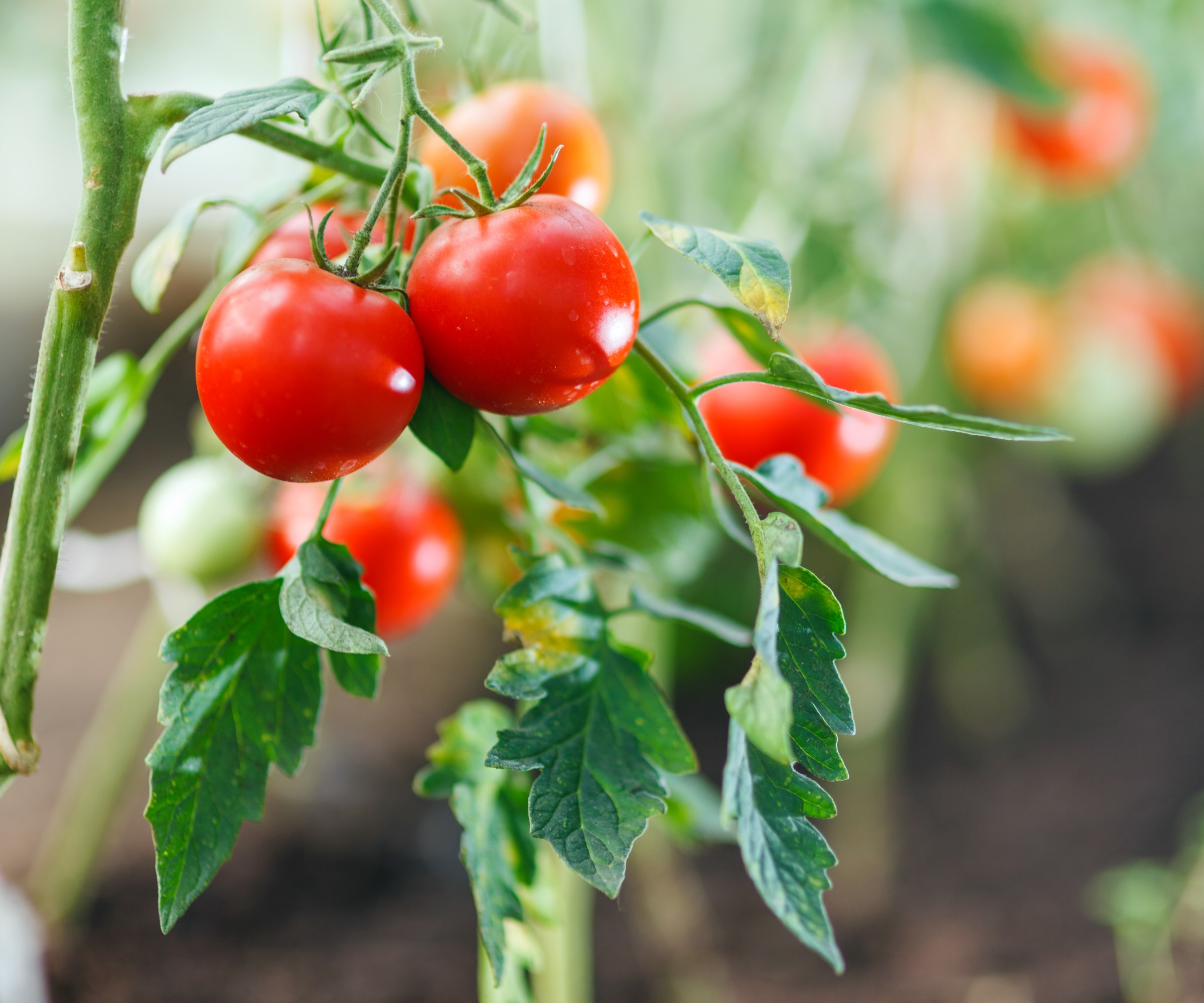
Determinate tomatoes
Determinate tomatoes are generally smaller than indeterminate varieties. They are more compact tomato plants that grow to a fixed size and do not continue to grow throughout the season. This growing habit does impact their fruiting, which happens during one period rather than continuously throughout the summer, and earlier than indeterminate types.
Ben Hilton, Founder and Editor of The Yard and Garden, explains how determinate tomatoes ‘grow typically around 3-4 feet and then stop growing.' He adds: ‘They produce all of their fruit over a 2-3 week period, which makes them great for canning, processing, and preserving. After the fruit has ripened, the plant dies off.’
Determinate varieties of tomatoes only require minimal support. It may be possible to grow them without any staking or support at all, due to their compact habit, but it is recommended to use a small stake, cage, or trellis to support them when they are laden with fruit at the peak of their maturity. An example of one type of tomato cage is the adjustable K-Brands Tomato Cage available at Amazon.
Their compact habit makes determinate types a great choice if you want to grow tomatoes in containers, while they are also ideal for those with a small backyard, or for windy sites. Determinate varieties can also present a better choice for any grower that lives in a zone with a short growing season.
You can buy determinate tomato plants and seeds at Burpee.
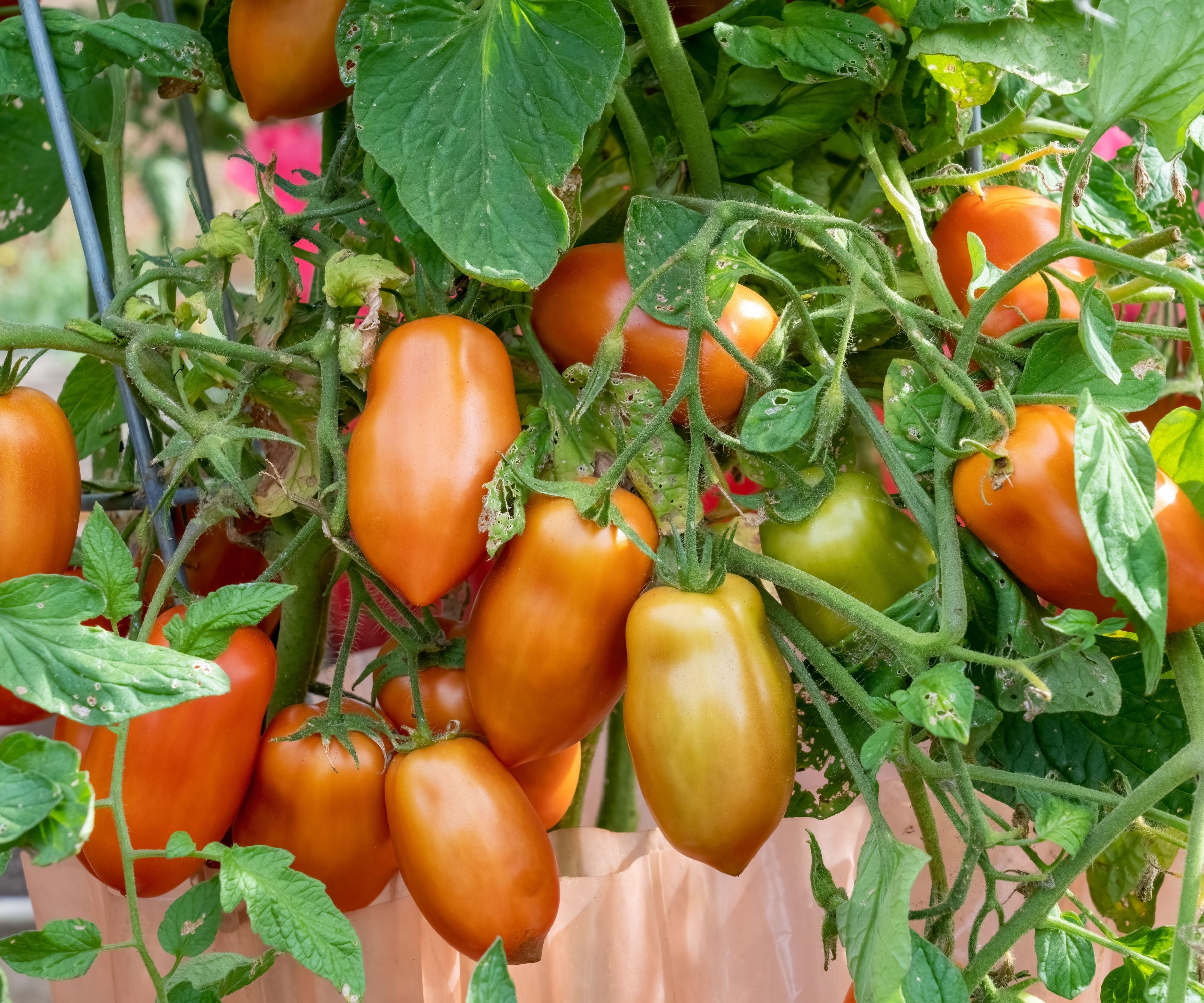
Indeterminate tomatoes
Indeterminate tomatoes make up the majority of tomato varieties. They continue to grow taller throughout the season and continually produce fruits all the way through to when the frosts hit.
The plants can get very tall, between six and ten feet, and need sturdy supports as they grow. Whereas determinate varieties have a shorter and wider growth habit, indeterminate types grow vertically and need to be trained as tall and narrow plants. Therefore, tall and strong supports, such as stakes, cages, or trellises, are required to support the heavy plants. Growing tomatoes upright makes them one of the best foods to grow in a greenhouse as you can get a lot of fruits in a small space.
Anne Swithinbank, a gardens expert for Homes & Gardens, says that, along with the ‘obvious main stem’, side stems on indeterminate tomatoes can also grow long and do need to be pinched out to keep the plant in a manageable shape.
She explains: ‘These [indeterminate tomatoes] are usually trained on a single stem, tied into a cane or wound around a string secured above the plant. Their tall, narrow habit saves space. Side-shoots are removed to prevent a tangle and control the number, quality and ripening of fruit.’
Anne says that there are some semi-determinate varieties that display some characteristics of both. She says: ‘Tomatoes known as semi-determinate sit between the two. The beefsteak variety "Marmande", for instance, will grow upwards to around 3ft, but then loses its sense of direction and terminates in a couple of flower stems.’ These types grow into larger bushes than normal determinate varieties and will need to be tied into supports as they can grow to three to five feet in height.
You can buy indeterminate tomato plants and seeds at Burpee.
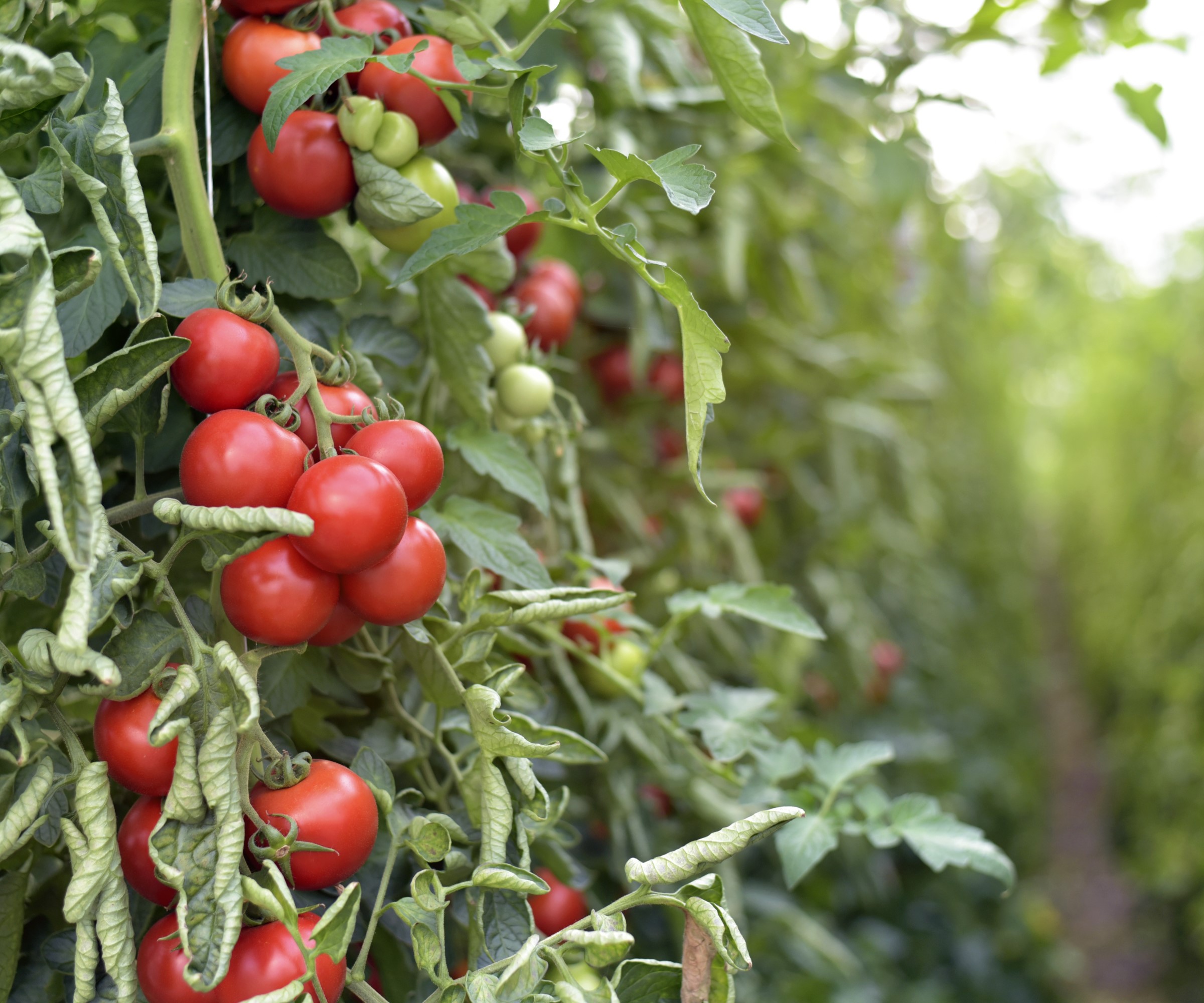
Pruning determinate vs indeterminate tomatoes
When it comes to pruning tomatoes, the rule of thumb is to not prune determinate varieties, otherwise it can reduce their harvest. Indeterminate tomatoes, however, need to be regularly pruned to keep them in shape. Always use clean garden tools for the job and keep them sharp as it will ensure a clean cut when pruning and reduce any risk of infection getting into the plant.
FAQs
Are cherry tomatoes determinate or indeterminate?
Cherry tomatoes can be either determinate or indeterminate, however the majority of them fall into the latter category. When you are planting cherry tomatoes you may have both types, if you are growing or trialing different varieties. In this instance, take extra care when it comes to labeling to ensure you know how you need to maintain your tomato plants. ‘When labeling tomatoes, note the name, date of sowing or planting, whether recommended for under cover or out, and whether they are bush or cordon,' recommends gardening expert Anne Swithinbank.
Is a beefsteak tomato determinate or indeterminate?
Beefsteak tomatoes tend to be indeterminate varieties, though some are semi-determinate, and need a sturdy support put in place in order to support their tall growth and heavy fruits. It is best to plant beefsteak tomatoes deep and to pinch out any side shoots from the main stem regularly. Beefsteak varieties of tomatoes need lots of space and an especially sturdy cage, trellis, or stake as their large fruit can weigh over one pound and potentially damage the plant if it is not properly supported.
If you are planning your kitchen garden ideas and want to grow tomatoes, then make sure to understand the key differences between indeterminate and determinate tomatoes. Both types offer their advantages and disadvantages to the grower, so it is a case of weighing up what you want from your plants. Take into consideration your space, the length of your season, and whether you want a long supply or a shorter cropping season.







